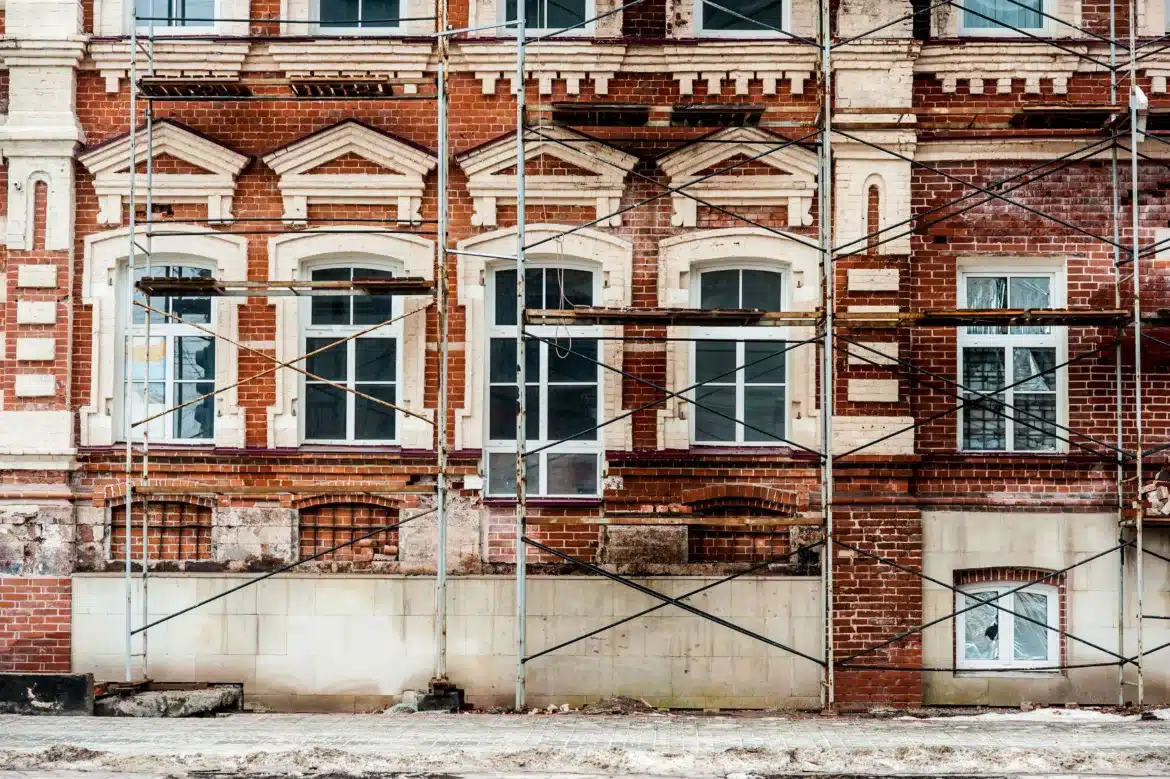The echoes of history reverberate through our world, most prominently in our architectural marvels. These buildings not only house the stories of the past but also represent the craftsmanship and technology of their eras. Yet, as time marches on, they face countless challenges that threaten their very existence. Restoring historical buildings isn’t just about repairing and reviving; it’s a delicate dance with the past, present, and future. In this extensive discourse, we explore the intricacies of this process, from identifying key challenges to the innovative solutions that can protect our heritage for generations to come.
The Imposing Task of Historical Restoration
Historical restoration is more than a construction project; it’s a multi-disciplinary effort that calls upon architects, archaeologists, historians, and craftspeople. It begins with a meticulous study of the building and its historical context. The restorers must decipher the original intent of the structure and uncover its story, which often involves peeling back layers of insensitive alterations and neglect accumulated over time.
Understanding the original materials and methods used to construct the building is crucial. This knowledge forms the foundation of any restoration project, guiding decisions about what needs to be restored, how it should be done, and with what materials. Preservationists must become detectives, sifting through evidence in the form of old blueprints, letters, and even the buildings themselves to uncover the truth of their past.
The Perils of Time and Neglect
An abandoned historical building is a sorrowful sight – a grand edifice laid low by the twin demons of time and neglect. Inertia is an insidious foe. Once a building begins to crumble, the process accelerates; a missing slate on the roof can cause extensive water damage, a small crack in the foundation can grow into a gaping wound.
Neglect is often accompanied by human activity, whether that’s war, natural disaster, or just the wear and tear of centuries. The challenges here are twofold: First, the structure of the building must be restored to ensure safety and longevity, and second, the restoration must capture the essence of the original building. The latter is the true measure of a successful restoration – one that passes not just the test of time, but the test of historical authenticity.
Balancing Act with Modernization
Once an historical building is structurally sound and representative of its original state, it is faced with another challenge — how to remain relevant without losing its identity. Our world is in a constant state of change, and buildings can find themselves stranded in an alien landscape of modernity.
The introduction of modern amenities and technologies into a historical space can be an act of defiance against time, but it must be executed with care. The key lies in balance. A Wi-Fi router in a 16th-century chateau would be irreverent without proper concealment, but necessary for the space to serve its modern purpose. This balance extends to the interior design, acoustics, lighting, and any other aspect that makes the space usable and enjoyed without overpowering its historical significance.
Financing the Fabrics of Our Past
Perhaps the greatest challenge of historical building restoration is financial. The cost of returning a building to its former glory – using period-appropriate materials and techniques, and often employing specialists – can be astronomical. Funding for such projects is often a patchwork of public and private money, historic grants, and philanthropy.
Raising such funds requires not just a compelling case for preservation, but also a vision for the building’s future. Donors and investors alike need to see practical, tangible, and financial returns, whether that’s in the form of increased property value, tourism, or a public good that transcends monetary gain.
Community Involvement as a Key
Preservation is a communal act. Historical buildings are landmarks, gathering spaces, and symbols of civic pride. Engaging the community in the restoration process is crucial. Public support can translate into political will, volunteers, and long-term stewardship.
Involving the community from the outset – sharing the history, significance, and plans for restoration – fosters a sense of ownership that can ensure the building’s care into the future. Community involvement can also lead to innovative uses of the space, aligning its preservation with the community’s needs and desires.
The Ethical Conundrum of Reconstruction
In some cases, historical buildings are so damaged or destroyed that the question arises whether they should be reconstructed. This debate strikes at the heart of the ethical considerations surrounding the restoration of our built heritage.
Reconstruction presents an opportunity to right historical wrongs, such as wartime destruction, yet the line between restoration and creation is a fine one. When does a reconstructed building cease to be an historical artifact and become a replica? Such decisions must be informed by research, with the primary aim being educational rather than aesthetic.
A Glimpse into the Future of Preservation
The future of preservation lies at the intersection of tradition and innovation. New technologies such as 3D scanning and printing can revolutionize how we approach restoration, accurate to the millimeter and capable of replicating even the most intricate details of an historical building.
At the same time, the core values of preservation – authenticity, craftsmanship, and an understanding of history – must remain. The future generation of preservationists must be equipped with both the tools and the ethos necessary to continue the mission of restoring and protecting the historical buildings that define us.
Practical Tips for Those in the Field
For professionals and enthusiasts in the field of architectural preservation, staying current on best practices, attending workshops, and networking with peers can be invaluable. Forming partnerships with local universities, historical societies, and preservation organizations can also provide access to resources and knowledge.
Furthermore, keeping apprised of potential funding sources, including grants and tax incentives for historic preservation work, can make the difference in launching or completing a project. Finally, always advocate for the public’s role in preservation, engaging communities and promoting the value of our shared heritage.
A Testament to Triumph Over Time
In the end, restoring an historical building is a testament to the human spirit’s triumph over time. It is an act that melds the past with the present, honoring the memories and achievements of those who came before, while ensuring that the story continues. The challenges are great, but the rewards are immeasurable – not just in the form of physical spaces saved, but in the enrichment of our lives and the preservation of a collective memory.
Whether you are an architect planning the next restoration project, a historian championing a building’s preservation, or simply a lover of old places, your role is vital. Each effort to save an historical building is a brick in the wall of its survival, ensuring that the tapestry of our architectural heritage remains intact for all to appreciate. The challenges are many, but with tenacity, innovation, and a profound respect for history, we can continue to write new chapters in the story of our built environment.



